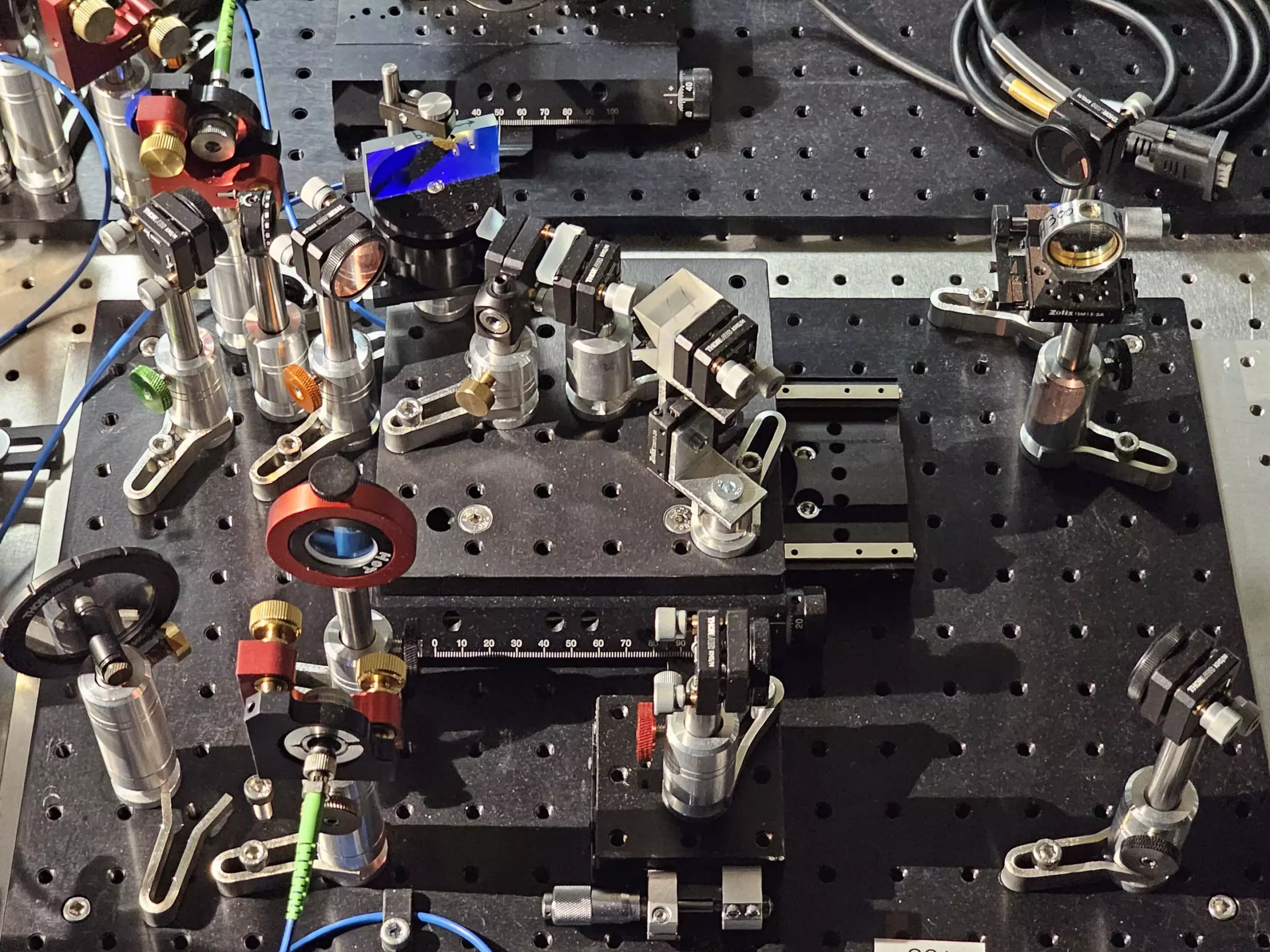Spectroscopy serves as a vital tool in multiple fields, enabling the analysis of light spectra emitted or absorbed by various substances. By examining these spectral signatures, scientists can identify chemical compounds and assess astrophysical properties of stars and galaxies. The utility of spectroscopy transcends science, playing a major role in telecommunication where different wavelengths transmit data through fiber optic networks, much like digital radio channels. However, distinguishing closely spaced channels remains a significant hurdle, primarily stemming from the Rayleigh criterion, which states that overlapping signals become nearly indistinguishable. This limitation has hindered advancements in both optical telecommunications and quantum networks, demanding innovative approaches to enhance spectral resolution.
Recent advancements from the University of Warsaw signify a potential paradigm shift in spectroscopy with a novel quantum-inspired super-resolving spectrometer. Developed by researchers from the Centre for Quantum Optical Technologies, this device demonstrates over double the resolution capacity of traditional spectrometric methods, offering promising applications in optical and quantum networks alongside spectroscopic analyses. This innovation raises anticipation for a future where such devices could be miniaturized into photonic chips, allowing for widespread deployment across various fields.
The basis for this enhancement lies in the Super-resolution of Ultrafast pulses via Spectral Inversion (SUSI) method. The core idea challenges conventional direct imaging techniques, which often overlook vital information transmitted in the light’s phase. By utilizing quantum-inspired principles, SUSI takes advantage of the complex electromagnetic field of light, optimizing the capture of phase-related information.
In traditional spectrometry, light is often analyzed using a diffraction grating or prism—a process that tends to smear the spectral lines of closely spaced wavelengths, resulting in lost information. In stark contrast, SUSI operates by manipulating the pulse’s temporal and spectral attributes, allowing for an unprecedented resolution. This approach cleverly unravels the interference caused by overlapping light pulses, thereby managing to decode fine spectral details that were previously shrouded in overlap.
At the heart of the SUSI design is the interferometric approach, where the light signal is funneled into two arms of the interferometer. One arm introduces a Fourier Transform (FT) that essentially dilutes the light’s characteristics, while the other performs an inverse Fourier Transform (IFT), reassembling the light signal in a manner conducive to separation. This symmetry and balance reduce losses in light intensity across both arms of the system, ensuring enhanced accuracy in measurements.
The process can be envisioned as an advanced juggling act; by dynamically transitioning between the states of a pulse using FT and IFT, SUSI captures the detail of shifted light pulses without being compromised by the constraints that hinder traditional spectrometers. Notably, SUSI’s adaptability signifies its applicability in real-world settings—components needed for the system can already be fabricated onto photonic chips.
The potential integration of this innovative spectrometer into existing optical systems could lead to transformative implications across several industries. In telecommunications, enhanced spectral resolution can improve data transmission rates and the efficiency of quantum networks. Additionally, the clearer spectral data can foster advancements in fields such as environmental monitoring, materials science, and even astrophysics, where understanding cosmic phenomena hinges on accurate spectroscopic readings.
Furthermore, as capabilities evolve toward miniaturization into photonic chip formats, even more expansive opportunities arise. In particular, portable applications in remote sensing or mobile diagnostics could become feasible, paving the way for more accessible and immediate scientific inquiry.
The University of Warsaw’s advancement of a quantum-inspired super-resolving spectrometer ushers in a new era of spectroscopy, granting unparalleled resolution capabilities to decipher the complexities of light with precision. By embracing quantum principles and developing novel techniques such as SUSI, this research not only addresses long-standing challenges in the field but also cements a foundation for future innovations. As the scientific landscape continuously evolves, it is crucial to harness and build upon such breakthroughs, reinforcing the interconnectedness of knowledge across disciplines and fostering the pursuit of discovery.


Leave a Reply